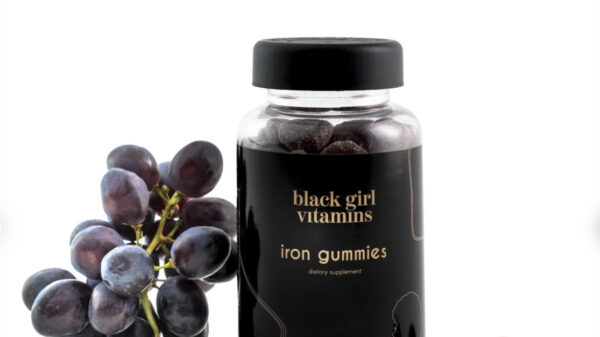Skip the Full English and Sunday Roast – Eating International is the Healthier Choice. New research finds the healthiest and unhealthiest diets from the far-flung corners of the world Hong Kong Sweet-and-Sour Chicken and Rice comes out on top for breakfast with low salt and saturated fat, and high Vitamin C The England-born dinner classic, chicken tikka masala, fares poorly, ranking 64th on the list out of 102 meals, while the country itself is 29th out of 34.
many, holidays might be a time to let go and forget about the diet. But for others, getting away can also mean focusing on wellness and health. Thanks to a new study from Hayes & Jarvis, there’s an easy way to find the countries with well-rounded cuisines.
The study identifies how close the nutrients in a meal are to the recommended proportions per calorie, and is built from popular breakfasts, lunches, dinners and claimed national dishes. Explore 34 countries and destinations worldwide, from Hong Kong to the US, as well as 102 different meal options.
From India to Brazil
At the top end of the scale, the healthiest countries included:
India – While masala dosas are on the bulkier side for a lunch option, they’re comparatively healthy, calorie for calorie, as saturated fats are lower than you might expect, fibre is very high, and micronutrients like Vitamins C and A are well balanced. China – Keeping to recommended carb limits and remarkably low sugars for the number of calories per meal, steamed buns, kung pao chicken and beef chow mein also keep cholesterol quite low.
Sri Lanka – The vegetable, fish, and chicken curries that make up some of Sri Lanka’s most popular dishes all make for a lighter diet with no fatty red meat and plenty of nutrients, including the best balance of calcium across all national diets.
Australia – Australia’s zucchini (courgette) fritters, and avocado & vegemite toast, mean that vegetable options are high. With a complement of chicken parmigiana for an evening meal, the Australian micronutrient profile is robust and salt is low.
Oman – Much of Oman’s dietary advantage comes from its micronutrients, with vitamins, iron, and calcium all being close to recommended levels. On a larger scale, it’s not quite as healthy as the rest in the top five – but the mixed rice dishes of kabsa, the “upside-down” pot of meat and vegetable maqluba, and the porridge-like harees are worth a little indulging.
USA – Often renowned for big portions, the US actually boasts some comparatively balanced iconic meals, with a simple hamburger actually proving high in iron and protein, if a little high in saturated fats. Pancakes with maple syrup are healthier for being wholewheat, only suffering from the high sugar, and clam chowder is packed with micronutrients like Vitamin C, Calcium, and Iron.
The unhealthiest country for a culinary tour proved to be Brazil – while it didn’t offer the unhealthiest meal around (which went instead to the meat-heavy chorizo, pork, and beef meal from Argentina), the high sugars of local granola bars and saturated fats in their moqueca de camarao (shrimp stew) drag the country down.
While it’s not as bad as Brazil, England didn’t fare well either. Coming in at 29th out of the 34 countries, the combination of a Full English, a Sunday roast, and a chicken tikka masala makes the England offering not so strong on the fibre – especially in comparison with a high-fibre Indian diet.
The English diet is also a bit fatty, especially saturates – something that could be improved by swapping to a Sri Lankan meal plan. Even the average iconic US meal isn’t too high in fats.
Despite the high saturated fat, however, the chicken tikka is actually England’s healthiest dish. But that isn’t saying much – the popular UK dinner is only the 64th healthiest dish in the world, out of a list of 102.
It keeps sugar comparatively low, but fibre and micronutrients like iron and potassium are low as well – while cholesterol is towards the higher end of the scale. If you’re looking to top up on the micros and drop the cholesterol, you might be better off going for a Chinese; beef chow mein has many of the nutrients the tikka is lacking.
The Full English is a worse option, though, with 26g more fat than the recommended amount for the serving size. Worst of all, it has more cholesterol per serving than any other dish in the study – so you might want to swap out the classic breakfast for the Sri Lankan option of a slow cooker vegetable curry or Australian zucchini (courgette) fritters, both of which are completely free of cholesterol.
But it turns out a Sunday pork roast is England’s least healthy option. Overloaded with protein (which, while good for a fitness routine, can be bad for your health if you overdo it) and high in both saturated and unsaturated fat, you’re better off changing your Sunday meal to a practically fat-free dish of harees from Oman.
Lesley Rollo, Managing Director at Hayes & Jarvis, comments: “Food can be one of the best parts of travelling abroad. Trying new things and tasting authentic flavours is all part of the holiday experience. However, for travellers who want to stay healthy and stick to certain diets whilst away, it can be difficult to identify which local cuisines are best.
“This tool can’t cover every meal in the world, but offers a fantastic overview into what different cultures cook and the type of delicacies that can be found around the world. We hope the tool helps influence future travel plans and inspires travellers to try new holiday destinations and local cuisines whilst away.”
For more meals around the world, and to see the full country list, have a look at the complete graphic on Hayes & Jarvis. Review more here – https://www.hayesandjarvis.co.uk/healthiest-national-dishes#/






































